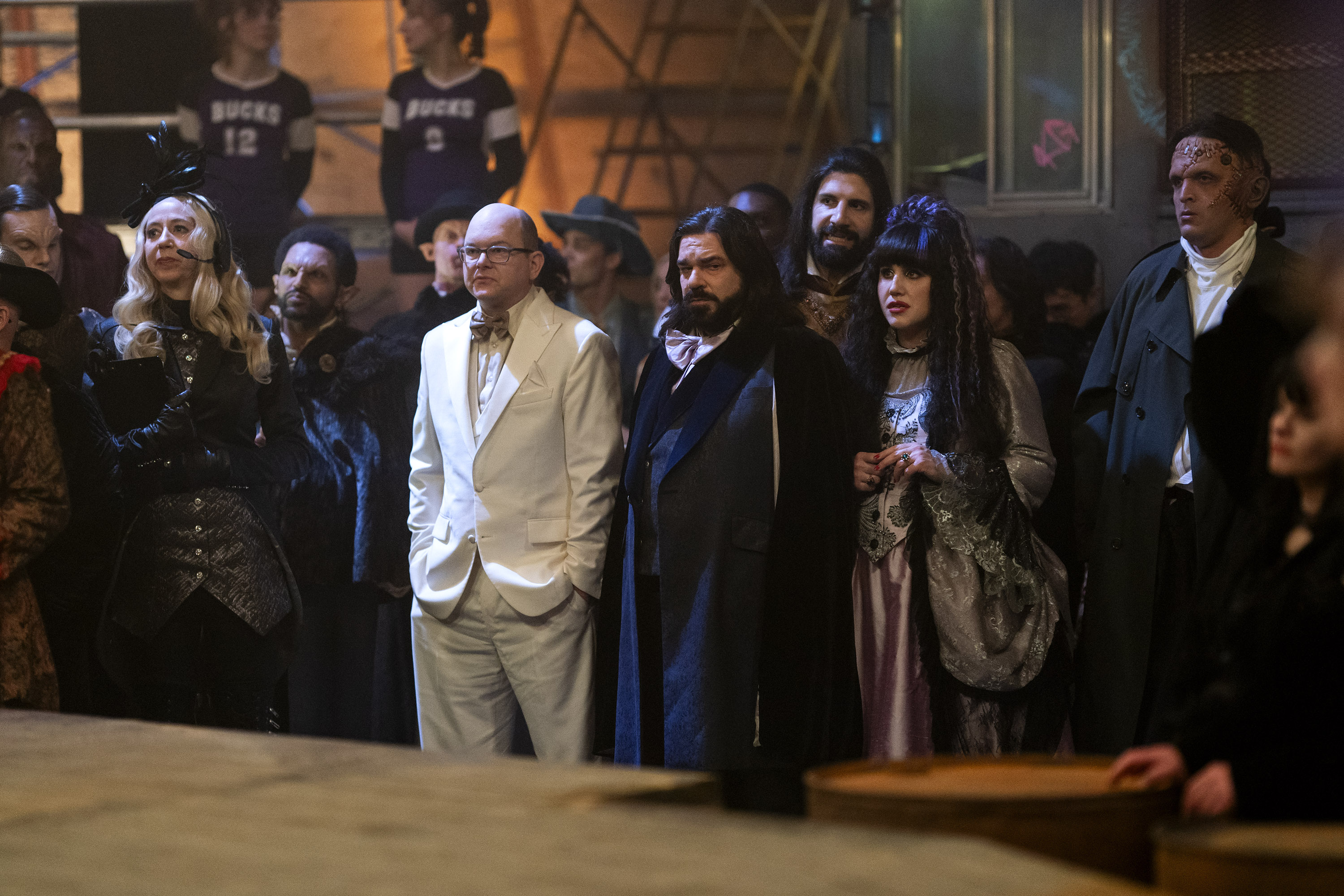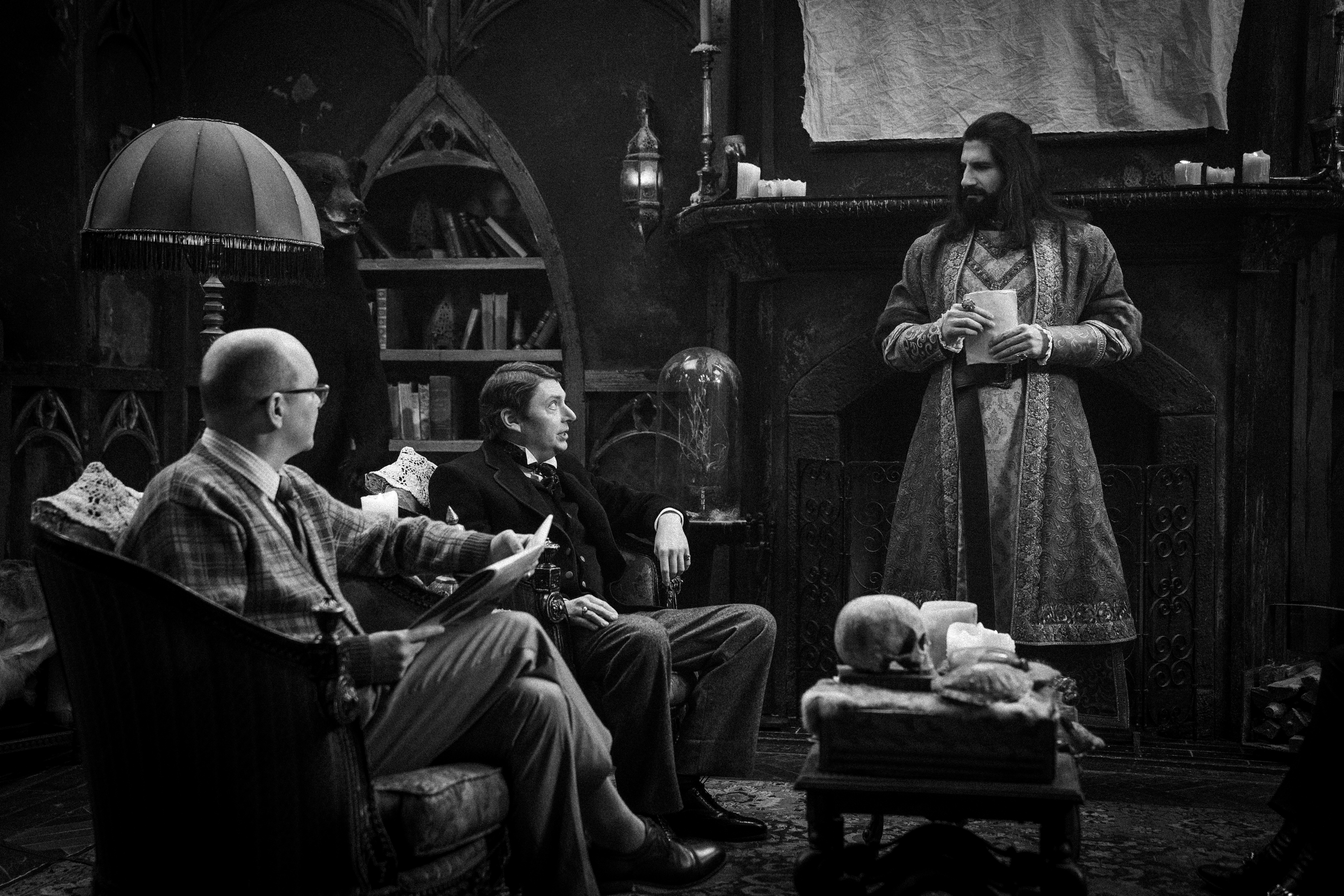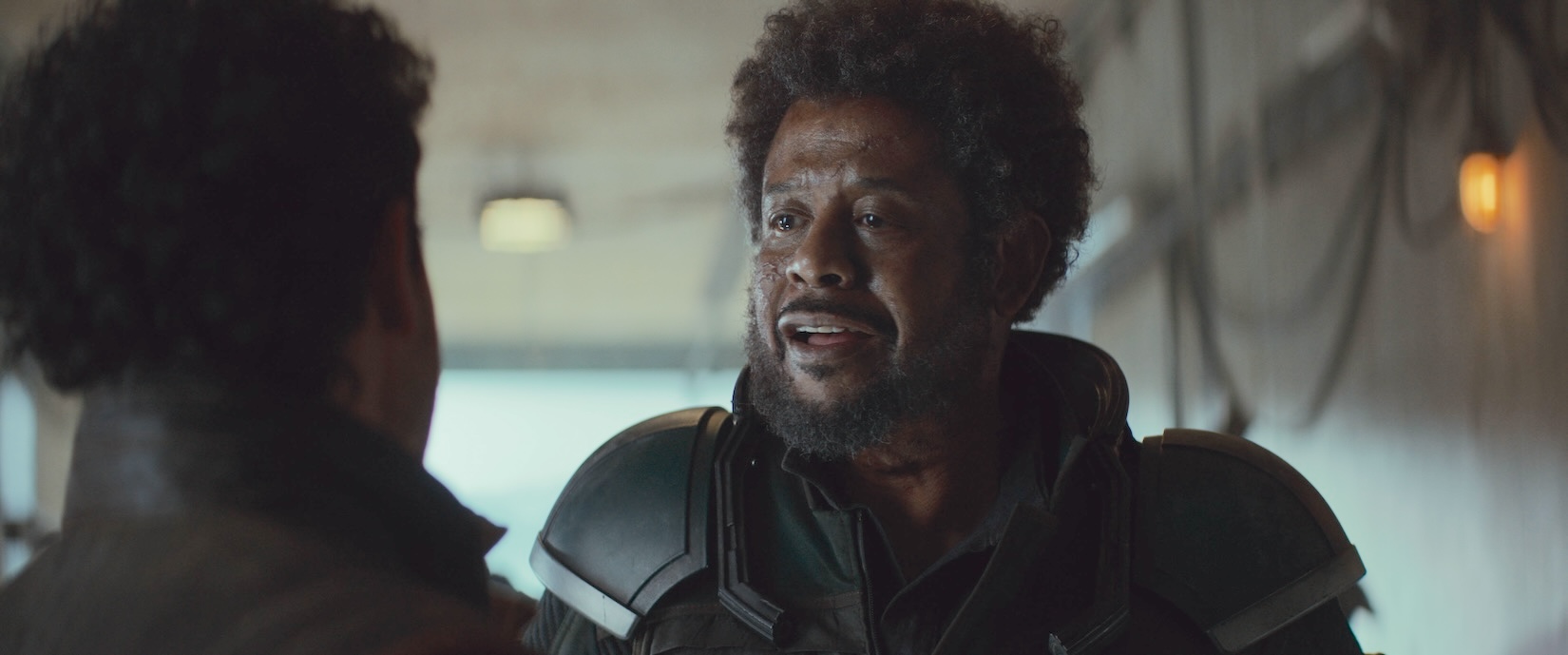After its Season 6 series finale, “What We Do In The Shadows” has gone to its eternal reward — streaming on Disney+ and Hulu — but the achievement of this half-hour vampire sitcom deserves to be exhumed at least one more time. “Shadows” is something of a chimera, blending the trappings of an ambitious genre piece with pleasingly broad comedy instincts and a mockumentary style that requires all the sets, stunts, costumes, and visual cues to slay anything too subtle. Getting that combination to work at all, let alone work well on a TV comedy schedule, required occult powers from every department and director on the show.
Yana Gorskaya has been in the director’s chair the most of anyone on “What We Do In The Shadows,” for 22 episodes including classics like “On The Run” and most of the ones that play with the show’s format like “Go Flip Yourself,” as well as the series finale, “The Finale.” But she’s something of a chimera, too, with editing credits on 33 episodes of “Shadows,” including its pilot, as well as the 2014 Taika Waititi film that inspired the series.
Gorskaya told IndieWire on an episode of the Filmmaker Toolkit podcast that when she was starting her career, directing didn’t seem like something that was feasible while also having a family, but in Season 2 of “What We Do In The Shadows,” the timing was right. And having the experience of where things need to end up in post-production, especially for a series with so many moving parts — not to mention body parts — was immensely helpful.
“Every director should have to edit, particularly a show like ‘Shadows,’ which is unshootable,” Gorskaya told IndieWire on an episode of the Filmmaker Toolkit podcast. “We are a show that does stunts and gags and prosthetics, and our schedule isn’t that much longer than a regular TV single-camera comedy. Our final season, we had five and a half days per episode, which felt really cush.”
That mongrel mix of so much (fake) blood, monsters, puppets, as well as temporarily transformational trips to cult wellness centers and/or sirens nests in the middle of the Hudson and/or “Rear Window” parodies across the street in Staten Island, is quite simply more than most comedy series want to handle, cushy five day shooting schedules or not. The ambition of the show was part of the joy of it, though.
“Shadows was a very elastic show in the best way. You have this version that the writers wrote, and then you have this version that you’ve pictured based on what they wrote, and then the cast is bringing you something completely different. The play between that is where this really magical alchemy of something wonderful comes together,” Gorskaya said.
Still, while the comedy might be unsubtle, the margins for achieving that comedy could be incredibly fine. “I think there’s actually a very bad version of this show that is done on a regular TV schedule,” Gorskaya said. “There are many elements that make it wonderful, but one of the elements [is] the spit polish that goes into it post. Just this meticulous — I mean, we frame-fuck the hell out of it. Like, the difference between a hard laugh and a soft laugh can be a frame. And we’ll play with that until we feel like we’ve got that balance exactly right.”

Having six seasons to play with that balance is as much of a gift in the modern streaming landscape as was the rich genre comedy setting. The finale, which contains multiple parody endings and a throwback documentary section shot on 16mm film, is something “Shadows” couldn’t have done without building up the cast and crew’s shared language and working relationships.
“We did a ‘Shadows’ record, which was a 16-page day in the [main] house so we could claw back another day [to do the parodies],” Gorskaya said of shooting the ‘regular’ material in the finale. “That could not have happened except maybe in the final season because everybody was just so on their game.’”
To its great credit, part of “What We Do in the Shadows” game is a constant play with parodies and weird, big swings that also make doing a marathon of ‘regular’ material near impossible. The finale also featured a Maysles-esque old footage — this isn’t the Vampire Residence’s first time being the subject of a documentary series — which allowed Gorskaya to do something she’d wanted to do on the show for a while: shoot an “archival” film.
“I think it was probably the first time not a single one of the cast members broke once as we were shooting. They were so on. Not a beat missed. We actually got that probably in one take,” Gorskaya said. “A number of our younger camera people, like our second ACs, had never worked with 16mm. So there was this moment of just awe with them on set, handling the film stock and having to change reels for the first time in their lives, and being trained by some of our more seasoned camera crew. There was this kind of hanging down of a tradition. Everyone felt almost like we were in church.”

The church of “What We Do In The Shadows” is certainly a dark and joyous one, because everyone committed the time to it. We may not get specifically a vampire comedy again for a while, but other series can and should learn what’s possible when they fight for the space to get a show right. Gorskaya credits a lot of its success with fighting for more post time in the first season.
“ Normally, editors’ cuts, you’d get four days,” Gorskaya said. “They’ve given us significantly more time than a standard television post schedule. We don’t actually start turning in episodes until after we wrap production because production is so intensive. [So] we get all the time in production and then an additional week or two weeks per episode before we have to turn in anything to anybody.”
One thing that taking the time in the edit has helped Gorskaya with as a director is having a sense of a more complex picture. “One thing that did happen to me [is] I had a lot more sympathy for directors than I did as an editor. I finally understood just how many variables you’re juggling and so I just gave people a lot more grace after directing myself,” Gorskaya said.
Sometimes, you have to be turned. But once on the other side of the divide, the incredible vampiric and/or directorial powers can start to flow. “I wasn’t sure if I had done a good job [directing] until I got back into post and was working with my dailies, and I was like, ‘Oh, this is good. I didn’t miss this. This is wonderful. I can do this,” Gorskaya said.
All episodes of “What We Do In The Shadows” are now streaming on Hulu. To hear Yana Gorskaya’s full interview, subscribe to the Filmmaker Toolkit podcast on Apple, Spotify, or your favorite podcast platform.



